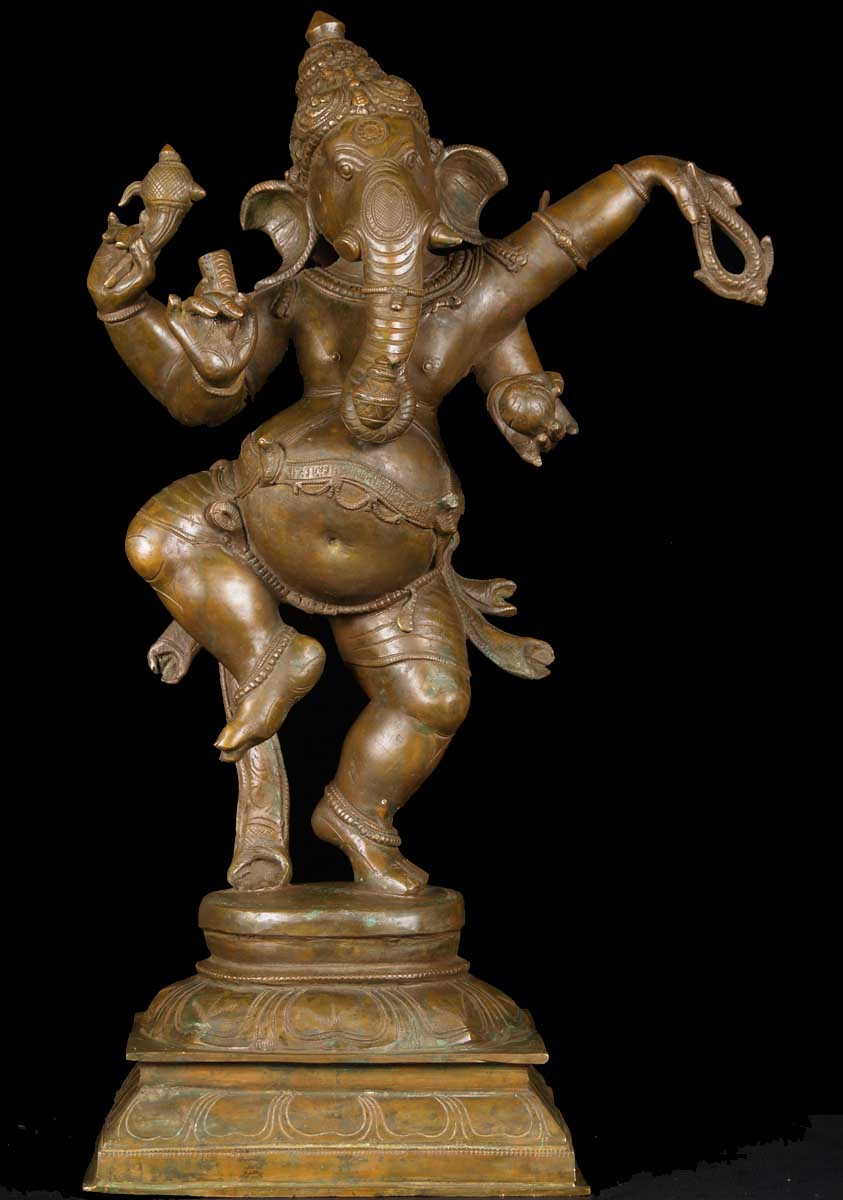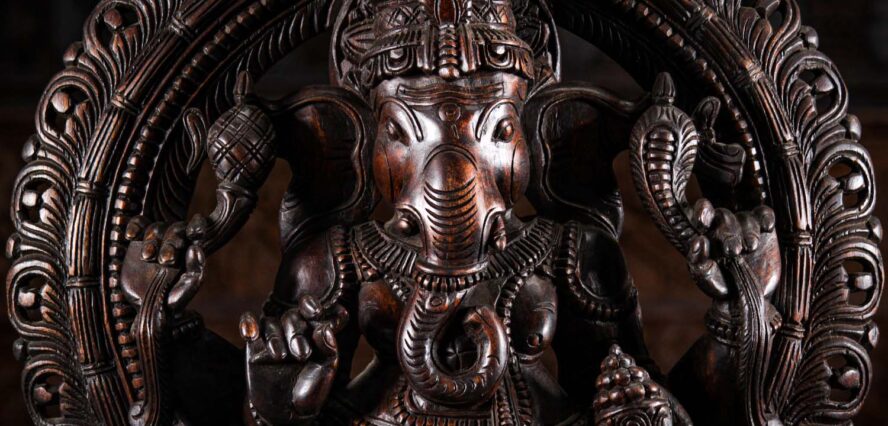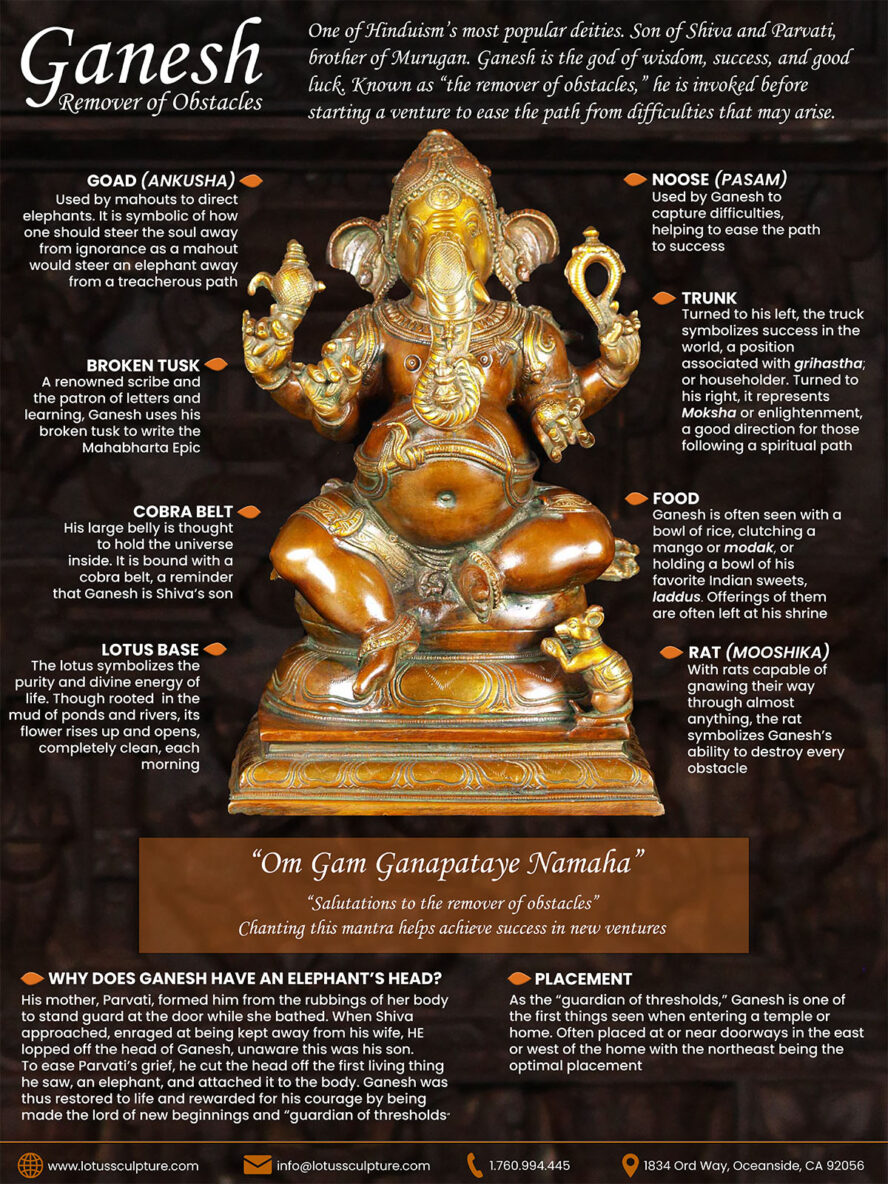

Lord Ganesh, the Remover of Obstacles, is rich in symbolism used as spiritual guides. Each symbol associated with the elephant-headed Hindu god is viewed as a reminder to manifest the powers held within us. Ganesh, a much-beloved and worshiped deity, is the son of Lord Shiva and Parvati. He is also known as the God of wisdom, prosperity, and auspiciousness.
A Ganesh statue can be hand-carved in many postures and forms, typically with four or eight arms, holding various symbolic objects. Lord Ganesh is often displayed dancing or playing a musical instrument, such as a flute. He is sometimes accompanied by or riding a rat (or the mouse) – a symbol of all-pervasiveness. The rat can be interpreted as under Ganesh’s control, which is symbolic of a spiritual pursuit to attain self-realization and grace.

Even the position of Lord Ganesh’s trunk has significance and special meaning. Like all of Ganesh’s symbols and traits, each hold an interesting difference in the benefits devotees would get. If the idol trunk turns left, it signifies blessings of wealth, success and pleasure. To his right, the trunk represents moksha-related benefits – understanding that all pleasures on earth are momentary and to take the path of achieving bliss. His cracked tusk held in the right hand was broken off with purpose to use as a writing tool for the Mahabharata Epic. This is seen as a symbol of sacrifice, strength and demonstrates that we must finish what we start.
Some of the most popular sacred symbols in Lord Ganesh statues are an elephant goad, bowls full of Indian sweets or honey, an axe, and an upside-down noose. Goads are symbolic of how one should steer the soul away from the ignorance and illusions of this earth, just as man would steer an elephant away from a treacherous path. Modakapatra, also known as a bowl of sweets, exemplifies Ganesh’s love of sweets and the symbol He loves most – moksha, or liberation, one the sweetest of all things sweet. The ax is a tool used to destroy ignorance in the world. The noose illustrates the notion to draw loved-ones close but also reminds us to encircle and save strayed ones in extraordinary ways.
Although some symbols hold more esoteric meaning than others, all of the sacred symbols of Ganesh can be interpreted in many ways. Above all, Lord Ganesh and his symbols bestow life lessons to help steady the mind and evolve with spiritual, positive progression.



thank you for the information it was informative and much appreciated.
Youre welcome!
Namaste Kyle Tortora
I have a long and very beautiful relationship with God Ganesha. Ever since He appeared to me in October 1974.
I wonder whether you could help me, please?
I was told that I would be given the power of the Swastika.
Would you know of the connection of the Swastika, with God Ganesha, perhaps?
Looking greatly forward to reading from you…
In divine freedom
Lady Shamla Rose
Namaste Kyle Tortora
Please ignore my earlier request. I just found my answer in “Loving Ganesa”, which book I acquired in 1996.
Hi I have a ganesha and today at the trunk there was honey. I never put that there. What does that mean?
Where’s the pine cone, said to represent the brain’s pineal gland, the organ of spiritual light and 3rd eye?
I have been trying to learn more about Lord Ganesha. He appeared to me three days ago and I am trying to understand what this Apparition meant. I would be very grateful for any input you may have. Thank you.